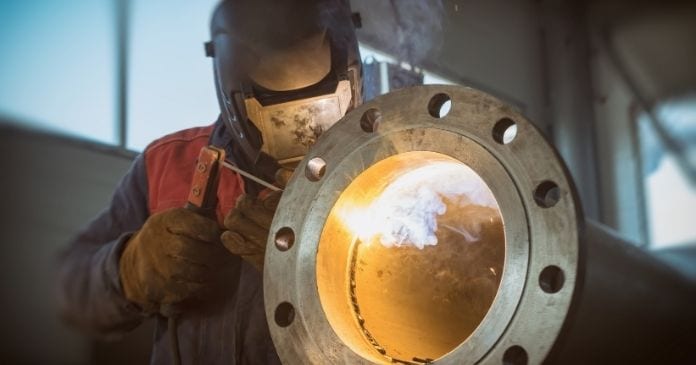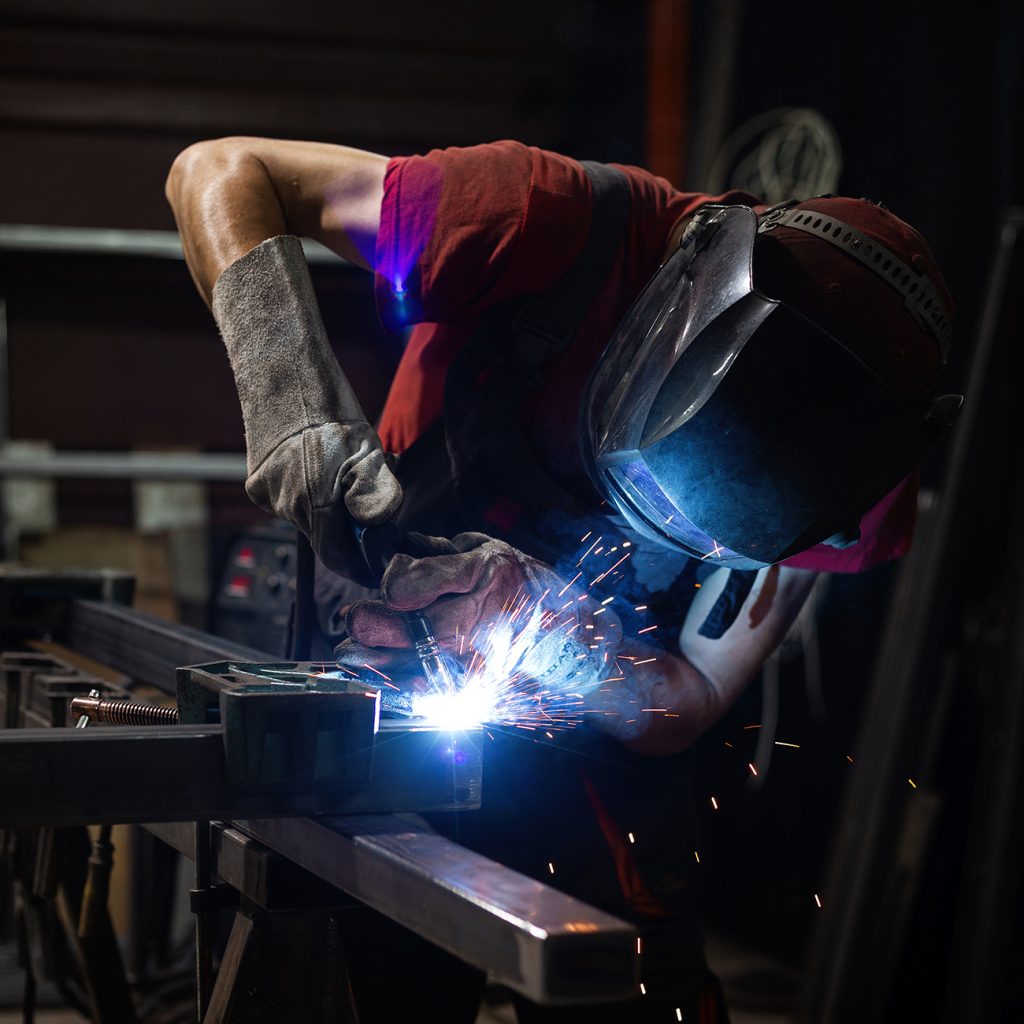Have you seen signs of incomplete fusion? Montana Mobile Welding and Repair explains how to detect them
Common Welding Fixing Issues and How to Address Them Effectively
Welding repair services usually come across a variety of concerns that can jeopardize the honesty of the end product. Usual problems consist of poor penetration, porosity, and imbalance, to name a few. Each issue provides one-of-a-kind challenges that require details techniques for resolution. Understanding these problems is essential for welders aiming to improve their outcomes and skills. This discussion will discover these usual welding fixing concerns and efficient methods to resolve them.
Insufficient Penetration
Poor infiltration takes place when the weld steel stops working to totally fuse with the base product, resulting in weak joints and prospective architectural failures. This concern often comes from inadequate warmth input, inaccurate electrode angle, or inappropriate welding rate. Welders might come across inadequate penetration because of a miscalculation of the required specifications for a certain product density or type. In addition, contamination on the base material's surface area can hinder reliable bonding, worsening the issue. To attend to poor infiltration, welders need to ensure ideal settings on their tools and keep a clean work surface. Routine assessment of welds is recommended to identify any shortages early, enabling prompt adjustments and the prevention of endangered structural stability in welded assemblies.
Porosity
Porosity is a typical issue in welded joints that manifests as little gas bubbles entraped within the weld steel. This flaw can jeopardize the integrity of the weld, resulting in lowered strength and prospective failing under anxiety. Belgrade Welding. Porosity normally develops from contamination, wetness, or improper welding techniques, which permit gases to escape right into the liquified weld swimming pool. To deal with porosity, welders need to assure correct surface prep work, maintain a tidy working setting, and use suitable welding parameters. Additionally, picking the appropriate filler material and securing gas can mitigate gas entrapment. Regular assessment and screening of welds can aid determine porosity early, ensuring timely corrective actions are taken, thereby protecting the top quality and dependability of the bonded framework
Imbalance
Misalignment in welding can arise from numerous aspects, including incorrect configuration and thermal growth. Recognizing the origin creates is necessary for efficient resolution. A number of correction strategies are offered to straighten components and guarantee structural integrity.
Reasons for Misalignment
Welding imbalance frequently originates from a selection of underlying issues that can compromise structural integrity. One main reason is improper fit-up of elements before welding, which can result in gaps and irregular surface areas. Variants in thermal growth during the welding procedure can also lead to distortion, especially if the products being signed up with have different coefficients of expansion. Furthermore, inadequate clamping and fixturing might fail to hold elements securely in position, causing motion during welding. Poorly maintained equipment, consisting of welding equipments and tools, might present variances in the weld grain, further adding to misalignment. Ultimately, operator error, coming from not enough training or experience, can additionally play a substantial duty in developing misaligned welds.
Correction Techniques Offered
Addressing imbalance properly calls for a combination of rehabilitative techniques customized to the specific issues at hand. One common approach is using components or jigs to hold elements in the right setting throughout welding, making certain regular placement. In addition, pre-heating the materials can assist minimize distortion and boost fit-up. For significant misalignment, mechanical realignment strategies, such as making use of hydraulic jacks or clamps, can be utilized to fix the setting prior to welding. Post-weld warmth therapy may likewise be necessary to alleviate stress and anxieties brought on by misalignment. Finally, careful examination and change during the configuration stage can prevent misalignment problems from becoming substantial troubles, advertising a smoother welding process and enhancing total structural stability.
Distortion
Distortion is a common obstacle in welding that can arise from different factors, consisting of uneven heating and cooling. Comprehending the reasons for distortion is crucial for carrying out reliable prevention strategies. Addressing this issue not just boosts structural integrity but also enhances the general quality of the weld.
Root causes of Distortion
When subjected to the extreme warm of welding, products often go through modifications that can cause distortion. This phenomenon mostly develops from thermal growth and contraction throughout the welding process. As the weld location warms up, the product broadens; upon air conditioning, it contracts, which can develop internal tensions. In addition, irregular heating across a workpiece can worsen these anxieties, causing bending or bending. The type of product also plays a significant function; steels with differing thermal conductivity and coefficients of growth might react in a different way, bring about unforeseeable distortions. Inadequate joint style and poor fixturing can contribute to misalignment throughout welding, boosting the likelihood of distortion. Comprehending these reasons is crucial for reliable welding repair service and avoidance methods.
Prevention Techniques
Reliable avoidance strategies for distortion throughout welding focus on controlling heat input and making certain correct joint style. Preserving a regular warmth input helps to lessen thermal growth and contraction, which can bring about distortion. Utilizing strategies such as pre-heating the workpiece can also lower the temperature slope, promoting consistent this hyperlink heating. Additionally, choosing proper joint layouts, such as T-joints or lap joints, can improve security and lower stress concentrations. Carrying out correct fixturing to safeguard the workpieces in position further help in keeping alignment throughout the welding procedure. Finally, staggered welding series can distribute warmth extra evenly, protecting against local distortion. By using these methods, welders can considerably lower the chance of distortion and enhance the overall top quality of their welds.
Breaking
Breaking is a common issue experienced in welding repair services, frequently arising from different variables such as inappropriate cooling prices, material option, or inadequate joint prep work. The event of splits can greatly endanger the integrity of the weld, resulting in possible failings throughout procedure. To address this issue, welders must first analyze the source, making sure that materials are compatible and properly selected for the certain application. Additionally, controlling the cooling price throughout the welding process is crucial; rapid cooling can cause tension and bring about breaking. Appropriate joint design and preparation additionally add to lessening the risk. Applying these strategies can enhance weld top quality and longevity, ultimately minimizing the probability of splitting in ended up weldments.

Incomplete Blend
A substantial issue in welding repair work is insufficient blend, which takes place when the weld metal does not adequately bond with the base material or previous weld passes - Belgrade Fabrication. This defect can cause weak points in the joint, potentially endangering the integrity of the welded structure. Variables adding to insufficient blend consist of insufficient heat input, incorrect welding strategy, and contamination of the surface areas being joined. To address this problem successfully, welders ought to guarantee correct pre-weld cleansing and surface prep work, in addition to adjust their welding criteria to achieve sufficient penetration and combination. Routine evaluation throughout the welding procedure can likewise assist identify insufficient blend early, permitting for prompt corrective steps to boost the general top quality of the weld
Overheating
While welding repair services can enhance structural honesty, overheating provides a considerable obstacle that can result in material degradation. Extreme warm during welding can alter the mechanical residential or commercial properties of metals, resulting in minimized strength, increased brittleness, and warping. This phenomenon is especially crucial in high-stress applications where structural integrity is paramount. Determining overheating can include visual examinations for discoloration or distortion, along with checking temperature level throughout the welding procedure. To alleviate the risks connected with overheating, welders ought to utilize appropriate strategies, such as controlling heat input, readjusting travel rate, and using suitable filler materials. Furthermore, implementing pre- and post-weld warmth therapies can help restore material buildings and improve the general high quality of the repair service, making certain long-lasting efficiency and safety and security.
Often Asked Concerns
What Are the Usual Signs of a Welding Defect?

Just How Can I Check My Welds for High quality?
To check welds for high quality, one can hop over to here use visual evaluations, ultrasonic screening, and radiographic approaches. Each method ensures architectural honesty, recognizes flaws, and confirms adherence to defined standards, inevitably improving the reliability of the welded joints.
What Security Safety Measures Should I Take While Welding?
When welding, one need to prioritize safety and security by wearing proper individual protective devices, ensuring correct air flow, safeguarding flammable products away, keeping a tidy workspace, and recognizing environments to stop mishaps and injuries.
Can I Repair a Weld Without Renovating the Entire Joint?
Fixing a weld without redoing the entire joint is feasible, depending upon the damage (Montana Mobile Welding and Repair Fabrication). Methods such as grinding, including filler product, or utilizing a welding procedure can properly resolve details imperfections while protecting the bordering framework
What Equipment Are Necessary for Reliable Welding Fixes?
Important devices for efficient welding fixings include a welding device, cord brush, grinder, safety gear, clamps, and filler products. Each device plays an important role in ensuring top quality and safety and security throughout the repair work procedure. Porosity usually emerges from contamination, dampness, or improper visit this web-site welding strategies, which enable gases to get away right into the molten weld swimming pool. Badly kept tools, consisting of welding devices and tools, may introduce inconsistencies in the weld grain, additional contributing to imbalance. When subjected to the extreme heat of welding, materials typically undergo changes that can lead to distortion. Splitting is a common concern encountered in welding repairs, usually resulting from numerous factors such as inappropriate cooling rates, product selection, or insufficient joint preparation. A significant issue in welding fixings is insufficient blend, which occurs when the weld steel does not adequately bond with the base material or previous weld passes.